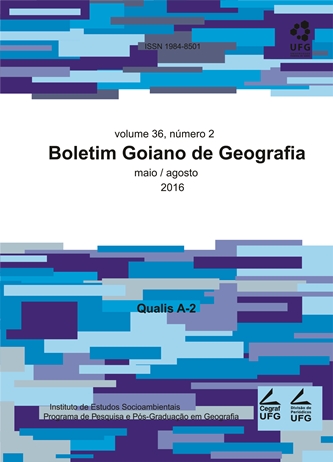BIOPOLITICS, SOCIAL MOVEMENTS AND GENETIC RESOURCES: THE CASE OF PAA SEEDS - DOI 10.5216/bgg.v36i2.42793
DOI:
https://doi.org/10.5216/bgg.v36i2.42793Abstract
Genetic resources are strategic elements for the control and organization of the production chain of capitalist agriculture. In Brazil, this process is not devoid of conflicts, as rural social movements resist the manipulation of genetic resources through contestatory and propositional actions. Seeking to analyze a recent Brazilian public policy, Food Acquisition Program (PAA), which has a new modality –”PAA Seeds”,, this study departs from the operationalization of the concept of fungibility of power, which considers that power has expanded to all dimensions of life. Thus, biopolitics in a context of pluripotent life, becomes exercised at the intracellular level through biotechnology. In this perspective, power is no longer exclusively of a territorial nature becoming possible to exercise by the manipulation of the temporality of life in order to control the territory. Through this system of concepts, we seek to verify if “PAA Seeds” can be considered a form of reappraising forces in a biopolitical contentious for the control of the manipulation of genetic resources, specifically the seeds. Based on the instances of dispute between agribusiness and peasant agriculture, we identify along the established analytical movement that “PAA Seeds” is presented as a rebalancing mechanism between these two different biopolitical projects.Key words: PAA Seeds, biopolitics, genetic resources, rural social movements.
Downloads
Published
How to Cite
Issue
Section
License
Authors will not receive any payment for publishing their work in Boletim Goiano de Geografia. Therefore, they must grant all rights to the journal. However, they are entirely and exclusively responsible for the published contents, and editors are free to make corrections or adjustments to texts in conformity with publication guidelines.







